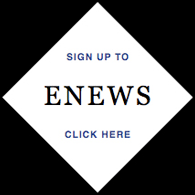FIONA FOLEY
Born 1964 in Maryborough, Australia. Lives and works in Brisbane, Australia.

Fiona Foley, Bearing Witness I, Epson UltraChrome K3™ inks on Hahnemühle Photo Rag® Bright White 310 GSM paper, 150 x 100 cm, edition 10. Courtesy the artist; Andrew Baker Art Dealer, Brisbane; and Niagara Galleries, Melbourne
Fiona Foley is one of Australia’s foremost contemporary artists, as well as a curator, academic and writer, who has confronted the politics of Indigeneity throughout her work. In 1987 she was a co-founder of the artists’ collective Boomali Aboriginal Artists Co-operative in Sydney, along with such artists as Tracey Moffatt and Michael Riley, to give support to practising urban Indigenous artists. A descendant of the Badtjala people who were forcibly removed from the island of Thoorgine or K’gari (Fraser Island) at the turn of the twentieth century, Foley has been uncompromising in her exposure of the cruelties and inequities of Australia’s colonial past – of the traumas and dispossession of Indigenous peoples resulting from European invasion – and has been continually forthright in displaying her culture. She has repeatedly engaged with issues of racism, multiculturalism and power.
Foley’s work asserts the sexuality of Aboriginal women who have historically been cast as both physically vulnerable and dangerously seductive. In Stud Gins (2003), she adopted a racist term used by some White colonial farmers who regarded Aboriginal women as their property. Government-issued blankets are printed with the words ‘Aboriginal’, ‘Woman’, ‘Property’, ‘Defiled’ and ‘Discarded’, reflecting the defilements that Aboriginal women were metaphorically forced to wrap themselves in.
In the series ‘Rereading Eliza Fraser’ (1995), Foley produced studies of Eliza Fraser, wife of Captain Fraser, who was shipwrecked on Fraser Island in 1836. Following this experience, she spoke ill of the Indigenous practices she had witnessed there and later published an account in London. Foley’s series of works, however, ‘redressed’ history by writing the Badtjala people back into the historical narrative from an equal point of view.
Self-portraits such as Native Blood (1994) and Badtjala Woman (1994) celebrate her indigeneity and womanhood, while addressing the oppression of her ancestors through the black-and-white anthropological style of studio portraiture. In her exhibition, ‘Wild Times Call’ (2002), she investigated a broader history of the photography of indigenous peoples from colonised lands, posing with Seminole people from Montana, Guatemala in a series of atypical images that avoid the depiction of stereotype. Alongside these, she presented paintings of objects from her native Fraser Island. Simple, yet striking compositions of mangrove pods and nautilus shells on monochromatic backgrounds, these quiet and meditative works express a love of home.
In a new photographic installation Bearing Witness (2009), shown for the first time at the 17th Biennale of Sydney, Foley arranges costume characters in a synthesis of previously explored themes of rape, subjugation and oppression. This work is a savage meditation on the effects of assimilation whether by the Church, the Law, marriage or the gun. Bearing Witness is an all too evident hybrid of history, modernity and contemporary life that continues in the way that many Aboriginal Australians are treated today. In the face of this, the viewer is compelled to both bear witness and ask the question: when will the rights of Aboriginal Australians be met, in the face of so many witnesses?
Selected Solo Exhibitions
2009 ‘Fiona Foley: Forbidden’, Museum of Contemporary Art, Sydney, Australia and The University of Queensland Art Museum, Brisbane, Australia
2008 ‘Sea of Love’, Andrew Baker Art Dealer, Brisbane, Australia
2007 ‘No Shades of White’, The University of Virginia, Charlottesville, USA
2006 ‘Strange Fruit’, October Gallery, London, UK
2006 ‘Red Ochre Me’, Casula Powerhouse Arts Centre, Sydney, Australia
Selected Group Exhibitions
2009 ‘Continuity and Change’, British Museum, London, UK
2008 ‘[Re]inventing the Wheel’, Denver Art Museum, Colorado, USA
2007 ‘Global Feminisms: New Directions in Contemporary Art’, Brooklyn Museum, New York, USA
2003 ‘The American Effect’, Whitney Museum of American Art, New York, USA
2000 ‘Aboriginal Art in Modern Worlds’, Hermitage Museum, St Petersburg, Russia and National Gallery of Australia, Canberra, Australia
Selected Bibliography
Fiona Foley (ed.), The Art of Politics/The Politics of Art: The Place of Indigenous Contemporary Art, Keeaira Press, Southport, Queensland
Benjamin Genocchio, Fiona Foley: Solitaire, Piper Press, Sydney
Michele Helmrich (ed.), Fiona Foley: Forbidden, exhibition catalogue, Museum of Contemporary Art, Sydney and the University of Queensland, Brisbane, 2009
Louise Martin-Chew, ‘Fiona Foley: Sea of Love’, Eyeline: Contemporary Visual Arts, no. 66, Brisbane, 2008
Timothy Morrell, ‘Collector’s Dossier: Fiona Foley’, Australian Art Collector, no. 50, October–December 2009




























